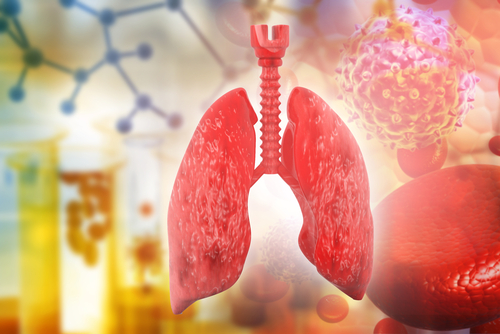UI Researchers Develop Breakthrough Approach to Gene Therapies for Respiratory Diseases

A new, more efficient method for delivering gene therapies to lung tissues — based on tiny engineered proteins, called peptides —is creating therapeutic opportunities for people with diseases like cystic fibrosis, chronic obstructive pulmonary disease or COPD, and asthma.
The potential of these new delivery tools was described in the study “Engineered amphiphilic peptides enable delivery of proteins and CRISPR-associated nucleases to airway epithelia,” published in the journal Nature Communications.
Advances in the knowledge and development of gene-editing tools has brought hope to people affected by genetic disorders. Some proposed strategies are now taking their first steps as real and effective therapies. However, for patients with some rare diseases, new treatments remain only a remote hypothesis.
That was the case for people with pulmonary diseases, for which effective gene therapies were found to be more challenging to achieve.
The tissue lining the airways, called respiratory epithelium, has natural barriers that can prevent viral vectors — the common vehicle used to transport gene therapies — from effectively delivering the wanted therapeutic gene to the targeted airway specialized cells.
To overcome this limitation, a team led by researchers at the University of Iowa (UI) developed a new delivery tool that uses simple peptides to reach notoriously hard-to-access lung and airway cells.
“There is a lot of excitement about the possibility of using gene editing in medicine to treat diseases by repairing or modifying disease-causing mutations,” Paul McCray Jr., MD, chair of pulmonary research, and professor and executive vice chair of the department of pediatrics, said in a news story.
“But the issue is that we have to be able to safely deliver the materials. This research is one step in that path,” McCray said.
The team, in collaboration with researchers at Feldan Therapeutics, engineered these cell-penetrating peptides (CPPs) so they could retain their natural internalization proprieties, while also being able to escape a cell’s mechanisms for removing foreign products.
The researchers tested their new tool in different experimental set-ups, including as a delivery system for the CRISPR/Cas editing system.
Using experimental cell models and mice, they showed that their engineered CPPs could safely and effectively transport CRISPR elements to different specialized airway epithelial cells. The team also confirmed that by using these “shuttle” peptides it was possible to achieve gene editing at levels high enough to be useful clinically without signs of short-term toxicity.
“This delivery strategy offers promise for gene editing and may allow modification of accessible progenitor cell types of the airway and alveolar regions,” the researchers said.
“This provides a breakthrough approach for hard-to-transduce cell types, and may serve as a platform for further design opportunities with other cargoes including therapeutic antibodies and peptides.”
The team is now screening approximately 100 new peptides to identify those that could represent the most efficient delivery systems for biological cargoes.






